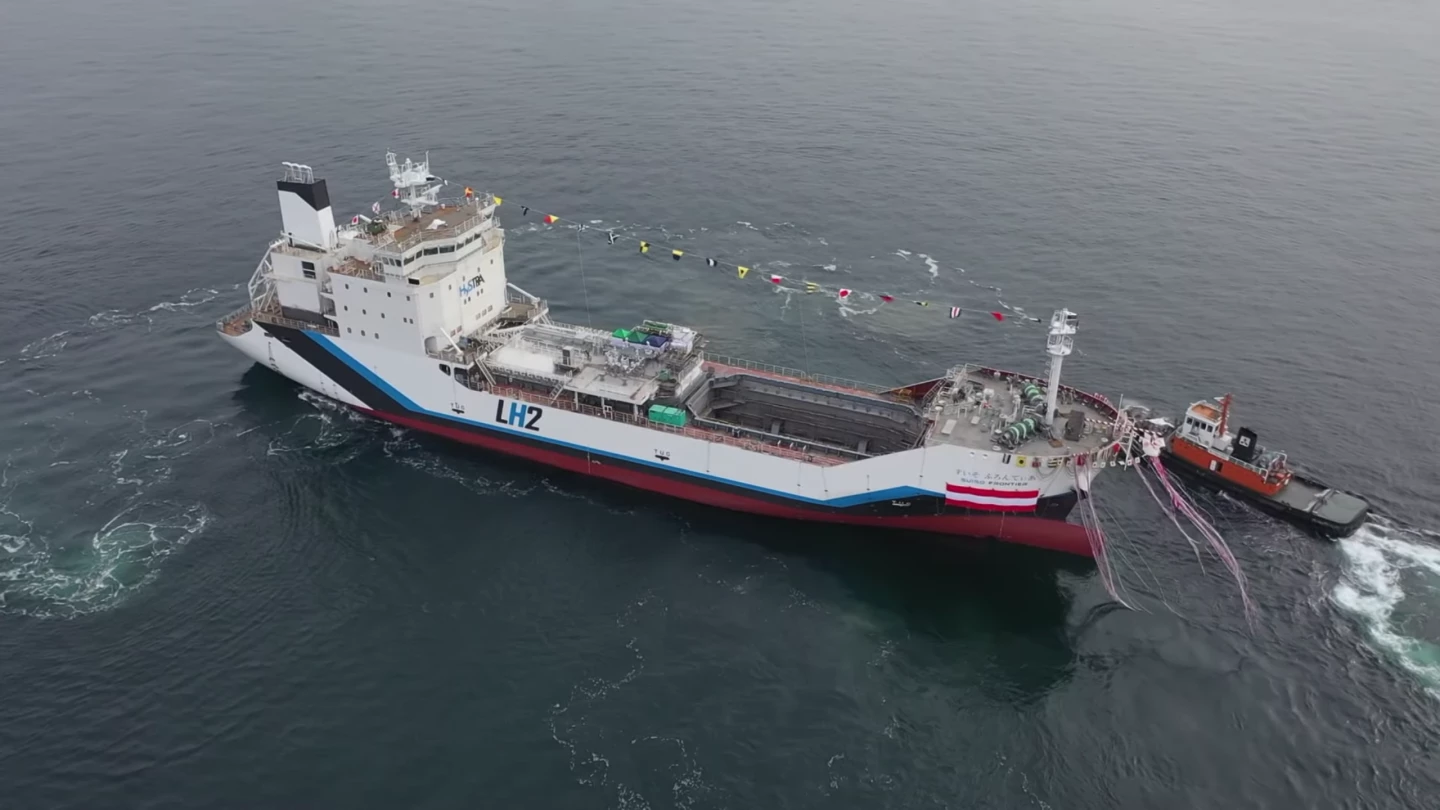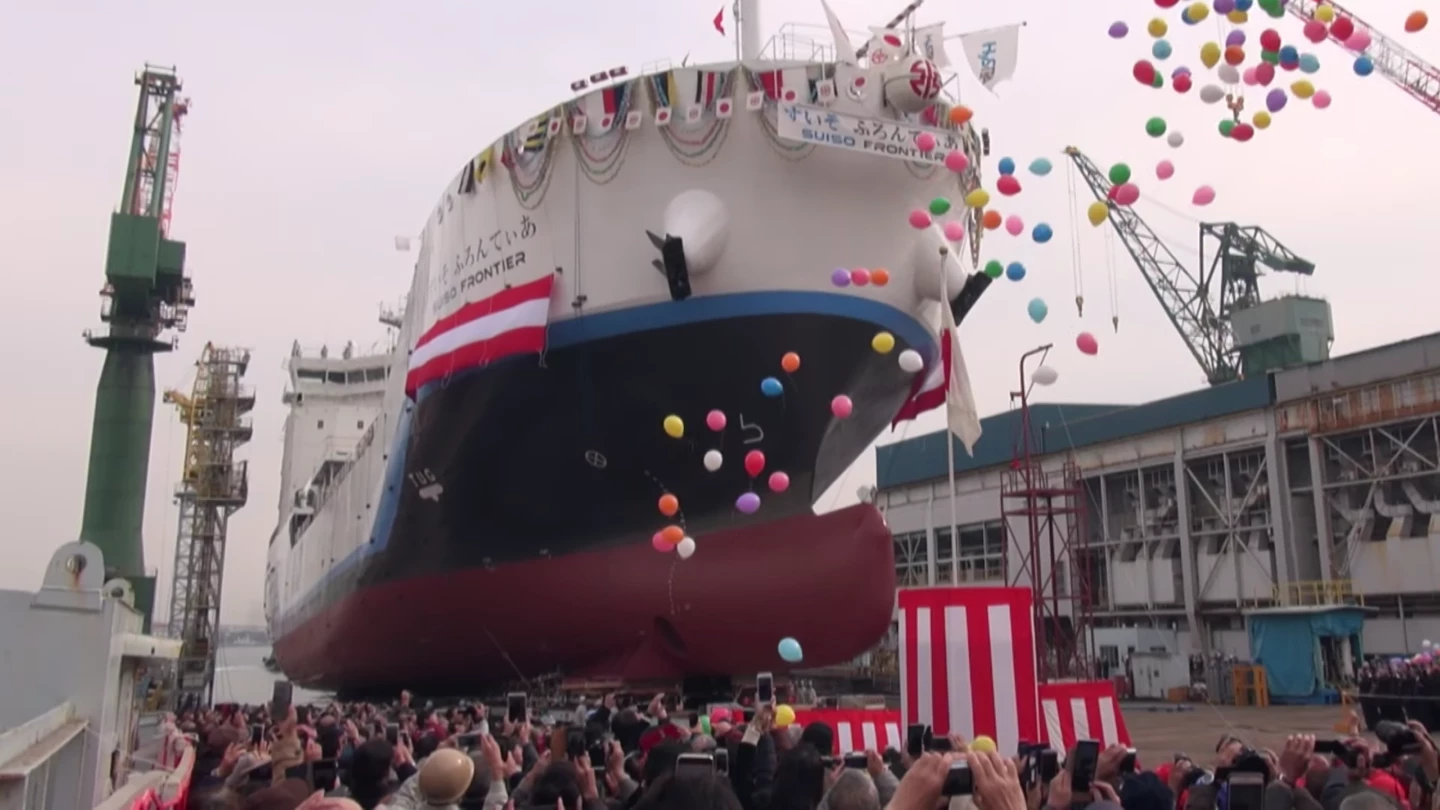Japan and Korea are pressing ahead with their efforts to build a new energy economy that could make liquid hydrogen as common as petroleum or natural gas. This would allow, in particular, for a lot more zero-emissions driving thanks to fuel cell cars, trucks and, potentially, aircraft.
Well, zero local emissions anyway; part of the scheme will have to include bulk energy imports from other countries like Australia, which stands ready to take on the dirty job of producing the liquid hydrogen from fossil fuels such as brown coal and natural gas.
A pilot program is kicking off thanks to a partnership between Kawasaki Heavy Industries, Iwatani Corporation, Shell Japan and J-Power, and last week, Kawasaki delivered on its part of the deal by launching a brand new ship designed to carry liquid hydrogen between the south coast of Australia and an unloading terminal under construction in Kobe, Japan. It's the first ship of its kind, the world's first liquid hydrogen transporter. Mind you, it runs on diesel.

The Suiso Frontier is a 116-meter (381-ft) monster that will soon be fitted with a vacuum-insulated, double-shelled liquid hydrogen storage tank capable of holding 1,250 cubic meters (330,215 gal) of liquid hydrogen. The hydrogen will be compressed to 1/800 of its regular gaseous volume, and cooled to -253° C (-423.4° F) in order to stop it from seeping out through the tank walls due to the sheer tininess of the hydrogen molecules, which can literally seep through the gaps in the atomic structure of a metal container at higher temperatures.
The hydrogen for this pilot program will be produced in the Latrobe Valley, in Victoria, Australia, through a brown coal gasification process. Some 160 tonnes of coal will be run through the process, creating 3 tonnes of hydrogen, which will be trucked 150 km (93 mi) to the port of Hastings, where the Suiso Frontier will pick it up and transport it to Kobe under the power of its diesel-electric motors.
Producing three tonnes of hydrogen will result in an estimated 100 tonnes of CO2 being released, according to Environment Victoria, and this doesn't take into account the land and sea diesel transport emissions. So in some senses, this scheme can be viewed as a way for Japan to move a bunch of its pollution offshore. Indeed, Melbourne University's Simon Holmes à Court, Senior Energy Adviser to the Energy Transition Hub, was moved to comment that “unless and until this project captures and stores its emissions, the project will produce some of the dirtiest fuel possible.”
Hydrogen can, of course, be produced in a number of different ways, including using clean, renewable energy. Solar or wind power could be used to generate electricity, which could be used to split hydrogen from water in an electrolysis process, for example. Whether a drought-stricken country like Australia would be keen on sending fresh water overseas in the form of hydrogen is one issue, but the other is simply that the financials don't stack up yet. So it looks like most of Australia's hydrogen energy exports will have hefty emissions costs in the short to medium term.
Likewise, in theory, brown coal-based hydrogen production could make it possible to capture and sequester the carbon dioxide byproducts of the production process in bulk. But this doesn't appear to be a priority in this pilot project.

Whatever the case, Japan seems highly motivated to make this liquid hydrogen economy work. Korea, too, is aiming very high, hoping to clean up its smoggy city air thanks to a targeted 1,200 hydrogen stations, 40,000 hydrogen buses, 80,000 hydrogen taxis, 30,000 hydrogen trucks and six million fuel cell hydrogen cars by 2040.
A number of big players seem very determined to make this happen, so it'll be interesting to see how the scheme develops as the emissions costs begin to become clear for energy exporting countries.
Check out the launch of the Suiso Frontier in the video below.
Source: Kawasaki Heavy Industries







